75 years
of helping people forced to flee
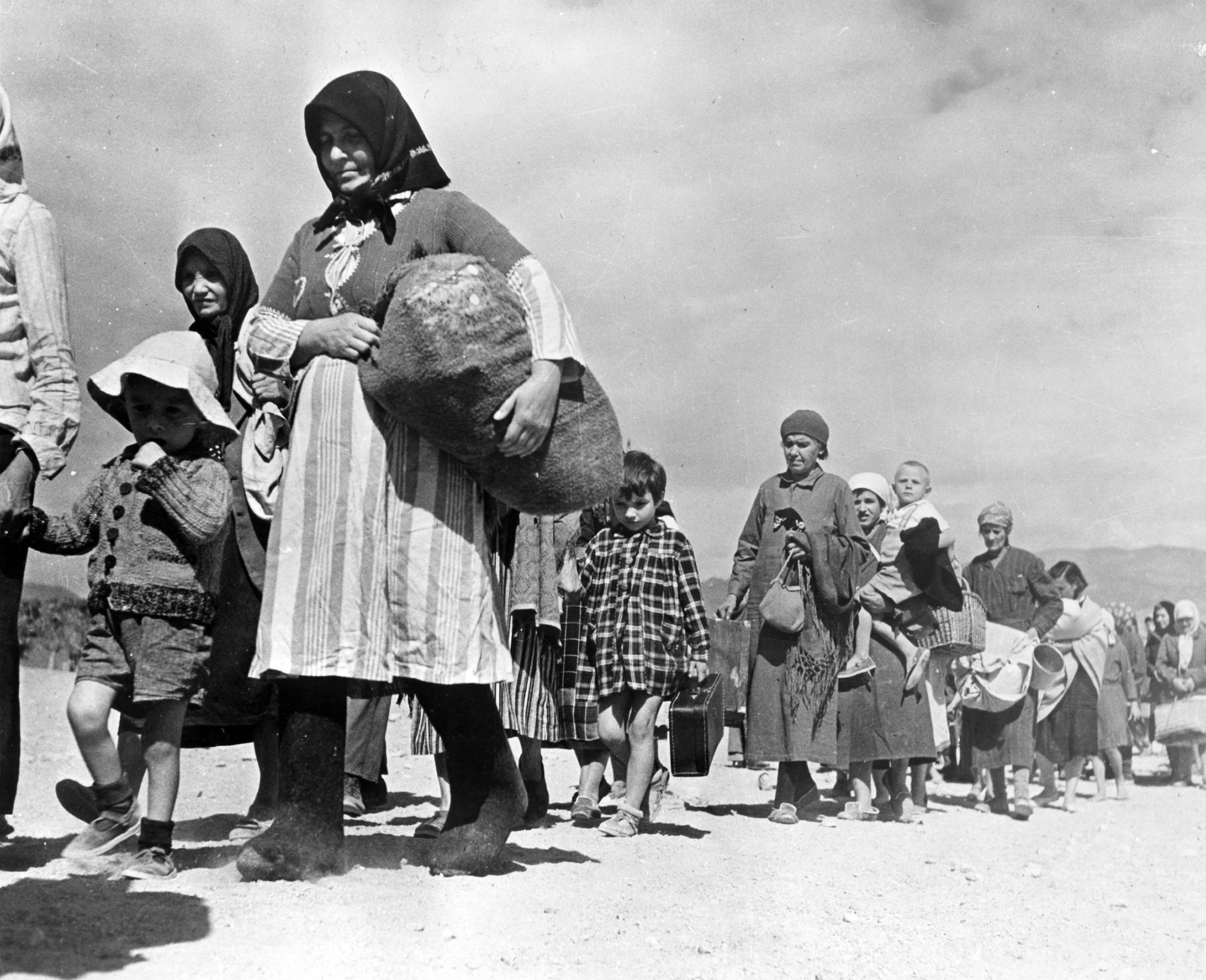
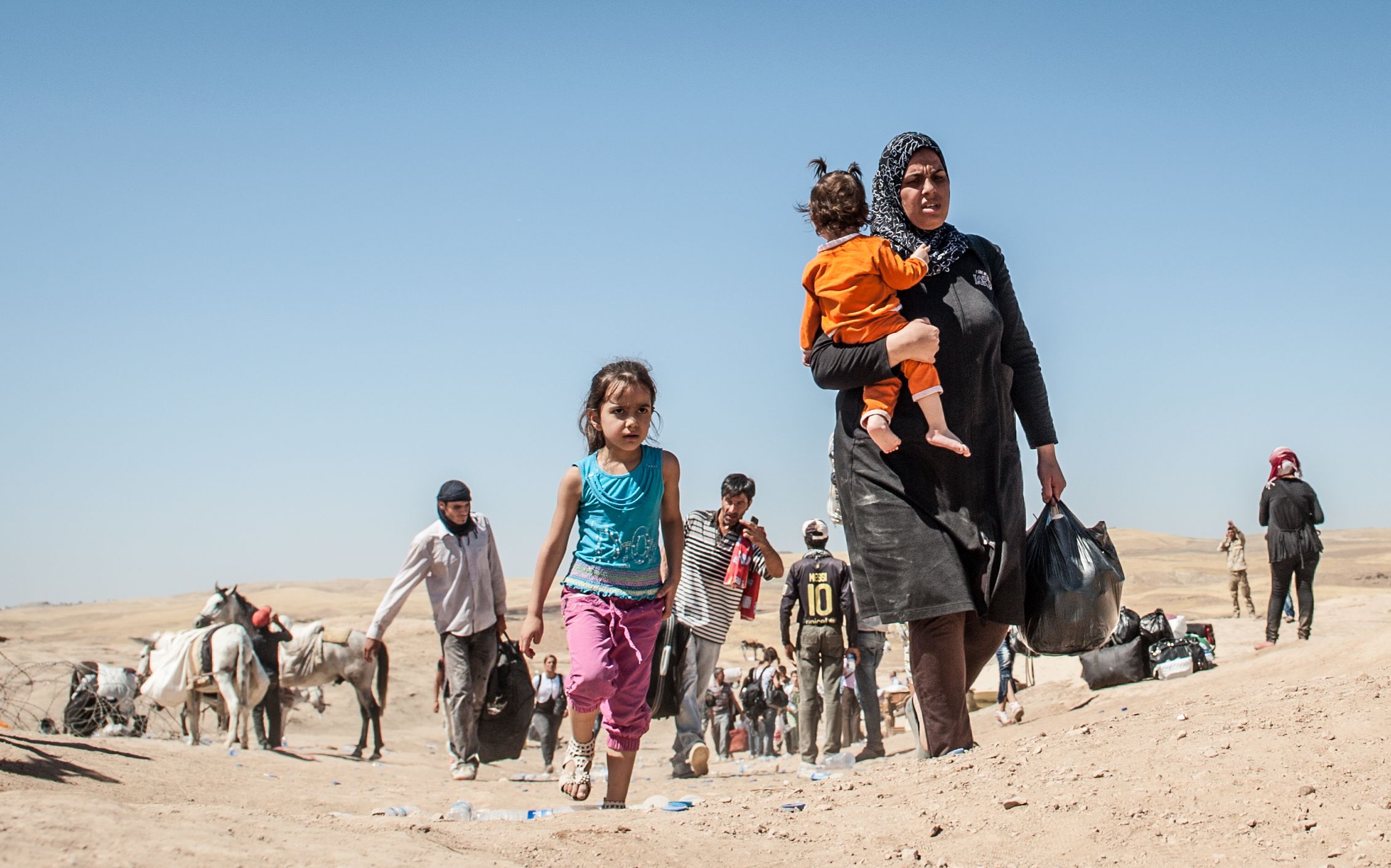
After World War Two, Europe lay in ruins. Millions of people had been displaced from their homes. Norwegians mobilised a large-scale fundraising effort, channelled through Europahjelpen (“Aid to Europe”) – the predecessor of the Norwegian Refugee Council (NRC). For 75 years, we have been the extended arm of the Norwegian people in our work for the world’s refugees.
The decades following World War Two have been marked by various crises. These crises have influenced our work and our organisation. We have gone from being purely a fundraising campaign without employees, to one of the world’s largest humanitarian organisations working for displaced people. Join us on a pictorial journey through our history.
Today, 75 years on, there are millions who need your help. Support our work today.
1946
Europe in ruins
After World War Two, many of Europe’s cities lie in ruins. More than 20 million people are homeless and there are 15 million refugees.
Europahjelpen established
Europahjelpen, the predecessor of NRC, is established on 24 May 1946. This advert is placed in several Norwegian daily newspapers. In a short time, 4,000 tonnes of food are collected and sent to the most war-damaged countries in Europe.
The 1950s
Major fundraising campaigns and the Cold War
In 1951, the UN Refugee Convention is established to find a solution to the refugee crisis in Europe. During this decade, the acute phase of emergency relief gradually diminishes, but there is still a refugee problem, and the Cold War leads to new displacements.
Norway continues to help. Here we see class 4C at Ullevål Primary School packing used toys for European children affected by the war.
The Hungarian Revolution
Work on solving refugee problems in Europe is coming to an end when the Hungarian Revolution breaks out in October 1956. In the months that follow, 200,000 Hungarians flee to the West and emergency support services are put on high alert.
More than 1,500 Hungarian refugees come to Norway in the winter of 1956–57. Europahjelpen becomes the Norwegian Refugee Council and is given a two-part task: to help refugees around the world and to help refugees in Norway. In terms of both domestic and international activities, our support for Hungarian refugees is our most important sphere of work at the end of this decade.
Fundraising record
When the UN General Assembly declares 1959–60 as World Refugee Year, fundraising campaigns are launched to support the final dismantling of the European refugee camps.
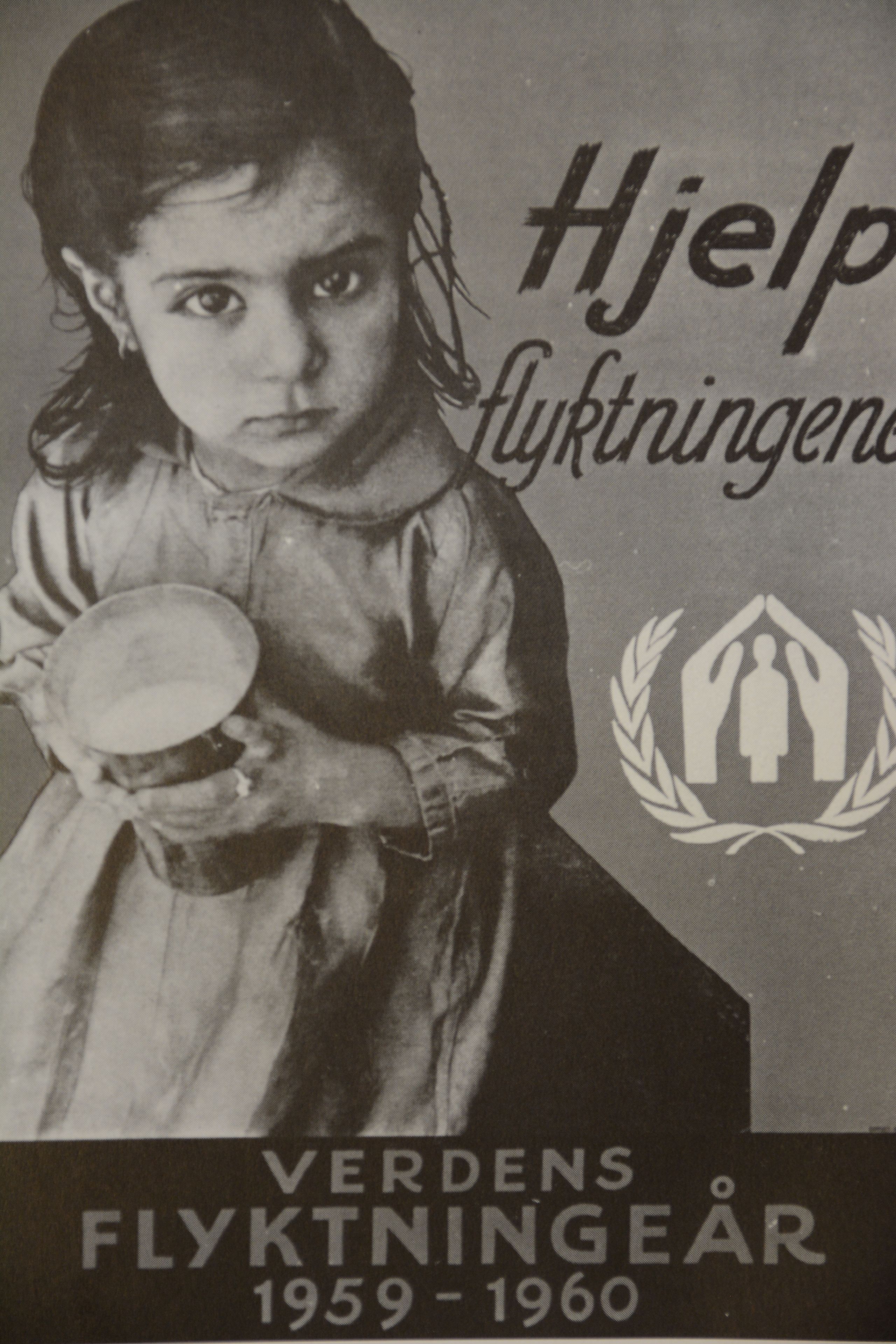
FUNDRAISING: Poster from the fundraising campaign in connection with the World Refugee Year 1959–1960. Photo: NRC
In Norway, NRC leads the fundraising work, and the Norwegian people collect NOK 15 million over the course of the year – a world record in relation to the country’s population.
Today, 75 years on, there are millions who need your help. Support our work today.

FUNDRAISING: Poster from the fundraising campaign in connection with the World Refugee Year 1959–1960. Photo: NRC
FUNDRAISING: Poster from the fundraising campaign in connection with the World Refugee Year 1959–1960. Photo: NRC
The 1960s
National liberation wars and international solidarity
The national liberation wars in former colonies during the 1950s and 1960s lead to millions of new refugees, while 80 former colonies gain their independence. In the Western world, a new generation is beginning to talk about international solidarity and responsibility towards the “Third World”. The UN High Commissioner for Refugees states that the time has come to lift our eyes to the rest of the world. During this decade, a total of 223 refugees come to Norway.
NRC carries out a number of major fundraising campaigns, and information about displacement issues is given more space. Humanitarian aid efforts are directed at the Middle East, Asia and Africa. Education for Palestinian refugees becomes a major issue, and Chinese refugees in Hong Kong, Tibetans in India and Nepal, and Algerians fleeing a bloody war of independence are among those who receive help.
Palestine
As early as the 1950s, the Palestinians are one of the world’s largest refugee groups. By the mid-1960s, 900,000 Palestinians are dependent on UN food aid. The Six-Day War of 1967 leads to further displacement and suffering.
NRC conducts humanitarian aid work on both sides of the conflict. Education for Palestinian refugees is one of our main concerns, but we also support a school for Jewish immigrants to Israel.
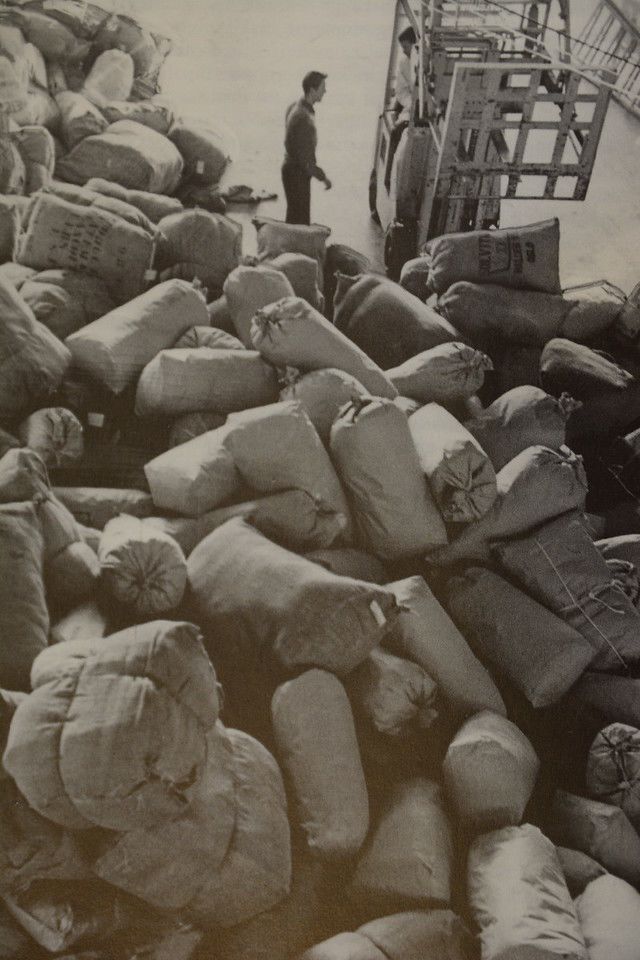
WOOLLEN BLANKETS: The result of the Algeria fundraising campaign in 1962: 150,000 woollen blankets are loaded in the port of Oslo. Photo: NRC
Algeria
The Algerian War of Independence breaks out in 1954. It is estimated that the war claimed 1.5 million lives, and it is considered the bloodiest national liberation war in Africa. By the end of the war, eight years later, more than three million Algerians have been displaced from their homes.
The woollen blanket fundraiser for Algerian refugees in 1962 is our first humanitarian response to emergency needs created by decolonisation and national liberation conflicts in the so-called Third World. The fundraising campaign provides 100,000 woollen blankets before winter in North Africa.
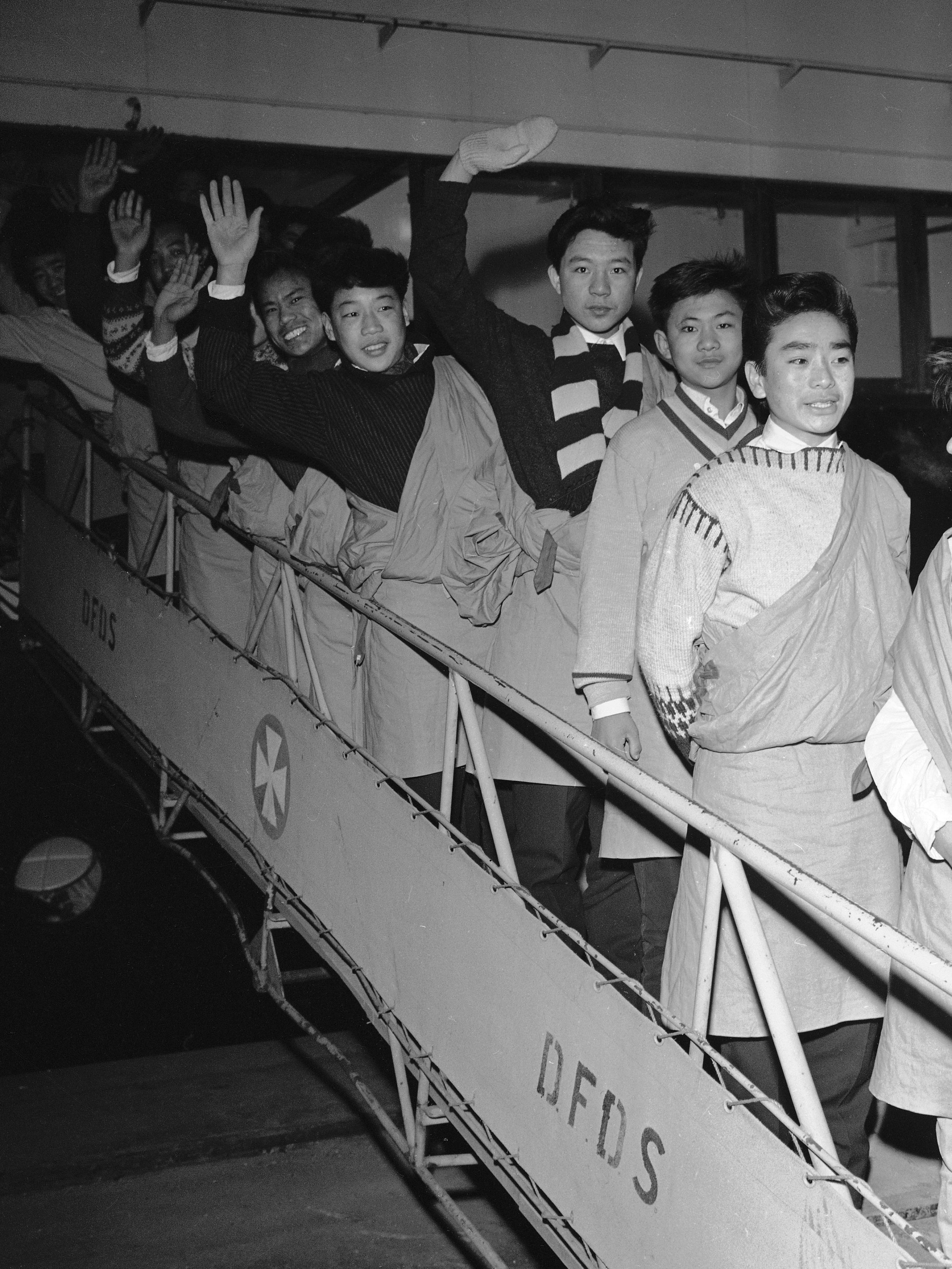
TIBETAN AID: The first Tibetan refugee youths arrive in Oslo in 1964 to receive an education in Gjøvik. Photo: NTB
Tibetan Aid
China’s occupation of Tibet in 1950, and the uprising in the Tibetan capital Lhasa in 1959, forces nearly 100,000 Tibetans to flee to India and Nepal. Among these is the Dalai Lama.
The situation of the Tibetan refugees receives a great deal of attention in Norway. Together with Tibetan Aid, NRC helps to bring 40 Tibetan young people to Norway to get an education.

WOOLLEN BLANKETS: The result of the Algeria fundraising campaign in 1962: 150,000 woollen blankets are loaded in the port of Oslo. Photo: NRC
WOOLLEN BLANKETS: The result of the Algeria fundraising campaign in 1962: 150,000 woollen blankets are loaded in the port of Oslo. Photo: NRC

TIBETAN AID: The first Tibetan refugee youths arrive in Oslo in 1964 to receive an education in Gjøvik. Photo: NTB
TIBETAN AID: The first Tibetan refugee youths arrive in Oslo in 1964 to receive an education in Gjøvik. Photo: NTB
The 1970s
New refugee crises
At the end of the decade, the number of refugees to Norway increases dramatically. A total of 1,680 refugees come to Norway in 1978–79. The main groups are the so-called “Vietnamese boat people”, and political refugees from the coup in Chile.
NRC is responsible for the reception and integration of refugees to Norway throughout this decade.
Vietnamese boat people
People from South Vietnam flee in large numbers in simple boats after the fall of Saigon, which ends the Vietnam War in 1975. These “Vietnamese boat people” also constitute the main group of refugees to Norway in the late 1970s. Most have been picked up by Norwegian ships.
Of the 1,680 refugees who come to Norway in 1978–79, over 1,300 are from Vietnam. NRC is responsible for their reception and integration. Today, about 23,000 people of Vietnamese descent live in Norway.
The Chilean coup d’état
Chile’s democratically elected president, Salvador Allende, is overthrown and killed in a bloody US-backed coup d’état on 11 September 1973. The military junta, led by General Augusto Pinochet, kills more than 3,000 people, and nearly one million Chileans flee the country.
During the first years of Augusto Pinochet’s dictatorship, Norway receives almost 400 political refugees from Chile. NRC is responsible for their reception and integration.
Also read the story of Chilean Alfredo Zamudio who came to Norway as a refugee in 1976.
The royal family gets involved
In 1970, HM King Olav V of Norway becomes NRC’s royal patron. Four years later, Crown Princess Sonja leads the first TV fundraiser, which raises a total of NOK 23 million. This is a world record in terms of the amount of money raised per capita.
In his New Year’s speech the same year, King Olav says: “I would like to take this opportunity to pay tribute to the donors to the Norwegian Refugee Council and all its supporters, including, to my delight, my daughter-in-law.” The king has long had a warm place in his heart for refugees, having received the Nansen Prize in 1961 for his efforts.
Crown Princess Sonja and TV charity fundraising events
Crown Princess Sonja is the organisation’s royal patron and also sits on the committee for NRK’s charity fundraising event TV-aksjonen Refugee-79. In the photo above, she is visiting Cambodian refugees in Thailand. At the end of the 1970s, there are about 240,000 refugees in Thailand, mainly from Vietnam, but also from Cambodia and Laos.
Three major fundraising campaigns in the 1970s lay the financial foundation for our international work.
The 1980s
From emergency aid to lasting solutions
The decade is marked by the great humanitarian needs of Vietnamese refugees in South-East Asia and Afghans fleeing the Soviet invasion, in addition to the massive influx of refugees in Sudan, Guatemala and El Salvador. During the 1980s, the number of refugees rises to 17 million worldwide. By 1982, the number of refugees coming to Norway has increased dramatically and reception capacity is overburdened.
In 1982, the Norwegian government takes over all tasks related to receiving and integrating refugees in Norway, and NRC concentrates all its efforts on helping refugees around the world. By the end of the decade, we have projects in 20 countries, and emergency relief work takes on a more long-term character, with a focus on lasting solutions and helping people to become self-sufficient.
Today, 75 years on, there are millions who need your help. Support our work today.
Focus on Africa
The national liberation wars, the legacy of colonial rule, political instability and prolonged drought in many African countries mean that half of the world’s refugees are now on the African continent. Several years of drought lead to famine, while also increasing the pressure on those countries that have granted asylum to refugees.
NRC sets up offices in Kenya’s capital Nairobi and start humanitarian aid work in Djibouti, Ethiopia, Kenya, Tanzania and Sudan. At the end of the decade, we move our regional office in Nairobi to Malawi to assist refugees from Mozambique.
Displaced Afghans
Within a few years of the Soviet Union’s invasion of Afghanistan in 1979, Pakistan has granted asylum to the world’s largest total refugee population, numbering 3.5 million. A few million people have also fled to Iran and a large number are displaced within Afghanistan itself.
As one of the first international aid organisations, NRC begins providing emergency aid for these refugees in 1979. We understand that this will become a long-term effort and establish our own office in Pakistan. In collaboration with three partner organisations, we ensure that the refugees receive medicine, health care, food, blankets, tents, education and vocational training.
Civil wars and violence in Latin America
In Latin America, the refugee situation takes a serious turn in the 1980s. The civil wars in El Salvador and Guatemala displace more than one million people, mainly within the region.
In 1986, we set up an office in Costa Rica, and during the 1980s, a third of all our activities takes place in Latin America. Our relief efforts focus mainly on enabling displaced people to support themselves.
Thailand – a host country
The wars in Indochina over the previous two decades have forced Thailand to become a host country for large numbers of refugees. At the beginning of the 1980s, there are about 240,000 refugees in Thailand – mainly from Vietnam, Cambodia and Laos.
NRC distributes food, helps to construct hospitals, and provides education, health care, clean water and better sanitary conditions. In addition, we help with the integration of refugees in Thailand and provide assistance to refugees from Laos who want to return to their home country.
The 1990s
New wars and many people displaced within their own countries
Africa is still the great refugee continent. Angola and Mozambique offer hope, but in several western and central African countries the situation is getting worse. Meanwhile, as the conflicts in El Salvador and Guatemala gradually come to an end, the armed conflict in Colombia escalates. Following the Gulf War in 1990 and the wars in the Balkans from 1991 onwards, the need for international aid explodes. In 1995, the total number of refugees and internally displaced people in the world is estimated at 45 million.
NRC withdraws from several countries where the refugee crises are subsiding, and concentrates its activities on four areas: Vietnam, Mozambique/Malawi, Afghanistan and Latin America. In 1994, we start humanitarian aid work for internally displaced people within Colombia and Colombian refugees in neighbouring countries. We also launch relief efforts in the former Yugoslavia, the Caucasus and Angola. In addition, we establish a global provider of expertise, called NORCAP.
Increased emergency preparedness
At the beginning of the 1990s, a number of wars and humanitarian crises, including in the Middle East and the Balkans, create an enormous need for humanitarian personnel.
In 1991, NRC establishes its own global provider of expertise, NORCAP, which consists of experts who can move out at short notice to assist various UN organisations in crisis situations.
The Balkans are burning
The dissolution of the former Yugoslavia, and the wars that follow in its wake, create enormous distress and suffering. Hundreds of thousands of people are displaced from their homes.
At the request of the UN, in 1992, NRC provides 35 people and 20 lorries to transport food, medicine and other emergency aid equipment to people fleeing the war in the former Yugoslavia. The transport assignment is the largest operation that NRC has ever been involved in. We also provide shelter and water, and organise health services for thousands of refugees. About half of the organisation’s total activity in 1995 is related to operations in the former Yugoslavia.
The wars in the Caucasus
The dissolution of the Soviet Union in 1991 leads to a series of wars in the Caucasus region, and hundreds of thousands are displaced from the four former Soviet republics of Chechnya, Georgia, Armenia and Azerbaijan.
In 1994, we set up an office in Tbilisi and start humanitarian aid work in Georgia, Armenia and Azerbaijan. Among other things, we provide shelter, legal aid and education.
Internally displaced people
The number of people displaced in their own country increases dramatically during the 1990s. Common to all internally displaced people is that their country’s authorities cannot or will not provide the protection that all states should provide to their own citizens. In many cases, people are actually forced to flee by their own authorities, such as in Rwanda, Sudan, Sri Lanka and the Balkans, to name a few of the great humanitarian disasters of the time.
NRC works actively to draw up international guidelines for legal standards for protection and assistance to internally displaced people. We also establish, with the support of the UN, the International Displacement Monitoring Centre in Geneva to map and monitor the situation for this group.
The 2000s
The fight against terrorism
The decade is marked by bloody wars, the fight against terrorism and the invasion of Iraq and Afghanistan. In Africa, bloody civil wars in Sierra Leone and Liberia shock the whole world. The tsunami that hits several countries on Christmas Day 2004 results in great destruction and suffering. The term “climate refugee” becomes widely used as global warming and climate change receive more attention.
At the beginning of 2005, there are 36.5 million displaced people in the world. Of these, about 25 million are displaced within their own country. The number of asylum seekers in industrialised countries is at its lowest for 16 years, and it becomes increasingly difficult for refugees to obtain protection outside their home country.
NRC conducts extensive humanitarian aid work in Sierra Leone, Liberia, Uganda, DR Congo and Angola. At the beginning of the 2000s, work in the Balkans makes up almost half of our activity. In addition, we start humanitarian aid work in a number of new countries: Afghanistan, Pakistan, Lebanon, Palestine, East Timor, Somaliland and Myanmar.
Afghanistan: a war without end
Following the terrorist attack in New York on 11 September 2001, the United States attacks the Taliban regime in Afghanistan. Before the attack, there are about 3.5 million Afghan refugees in neighbouring Pakistan and Iran. Today, 20 years later, there are still 2.2 million Afghan refugees in the two countries.
Just before the attack on 7 October 2001, NRC realises that the war could develop into the greatest humanitarian catastrophe in recent times, so we set up an office in Pakistan to provide assistance to newly arrived refugees from Afghanistan. In 2003, we expand our humanitarian aid work to include internally displaced people in Afghanistan, and in 2012, we start relief work for Afghan refugees in Iran.
The Middle East: ongoing instability
The conflict between Israel and the Palestinian people in the occupied territories and Gaza continues into the new decade. Israel’s attack on Hezbollah in Lebanon in the summer of 2006 increases tensions and humanitarian suffering in the region.
In Lebanon, we help returned refugees to rebuild their homes after the devastation caused by the war in the summer of 2006. In the occupied West Bank, we offer, among other things, legal assistance to families who have been forced from their homes and whose homes are destroyed.
Uganda: food for one million people
In northern Uganda, the Lord’s Resistance Army forces hundreds of thousands to flee their homes. Many seek refuge in camps, without the opportunity to feed themselves. Several thousand children are kidnapped and forced to serve as child soldiers.
NRC starts working in Uganda in the 1990s. At the beginning of the 2000s, we expand our aid, and over several years we distribute food to one million internally displaced people in the northern parts of the country. This is the largest food distribution operation the world has ever seen.
The 2010s
New and old deadlocked conflicts
In Syria, Yemen and Libya, the so-called Arab Spring develops into a humanitarian catastrophe. In addition, there are deadlocked conflicts in Africa and Colombia. The flow of migrants and refugees across the Mediterranean and through Central America shapes the humanitarian agenda during this decade. During 2015, more than one million refugees and asylum seekers come to Europe.
At the beginning of the decade, there are more than 43 million displaced people. Over 27 million of them are displaced in their own country.
NRC responds to all of the major humanitarian crises. We start humanitarian aid work in Syria and its neighbouring countries, as well as in Libya and Yemen. We also send out personnel from our global provider of expertise, NORCAP, who support various humanitarian operations.
Syrian refugees
The war in Syria displaces half the population. More than five million people end up as refugees in neighbouring countries, with no opportunity to return home. Most become dependent on humanitarian aid to survive.
NRC starts humanitarian aid work both inside war-torn Syria and in neighbouring Iraq, Jordan and Lebanon.
Boat refugees in Greece
More than one million refugees come to Europe in 2015. The vast majority take the sea route from Turkey to Greece. Most had northern European countries as their goal, but when several European countries closed their borders, many end up in overcrowded camps on the Greek islands or in other countries in the Balkans.
NRC’s emergency humanitarian aid team is sent to assist the Greek authorities on the island of Chios. We also send personnel from our global provider of expertise, NORCAP, to assist the boat refugees in Greece.
Libya: from dictatorship to chaos and war
The NATO-led bombing war and the fall of the Gaddafi regime in 2011 lead to political chaos and enormous destruction in Libya. The hardest hit are the refugees, migrants and internally displaced people in the country. They are already living in an extremely precarious situation where they begin to be subjected to arbitrary detention under inhuman conditions, human trafficking, abuse and exploitation.
In 2017, we establish offices in both Tripoli and Benghazi and provide help with shelter, education, clean water and better sanitary conditions.
Yemen: from the Arab Spring to bloody war
The popular uprising during the so-called Arab Spring ends in a bloody civil war in 2015, in which several regional powers intervene militarily. The war in Yemen develops into a serious humanitarian crisis with millions of people forced to flee their homes. Today, 20 million Yemenis need humanitarian aid and protection.
In 2012, NRC starts extensive emergency relief work and provide shelter, food, clean water and education.
The 2020s
Emergency aid during the Covid-19 pandemic
When the coronavirus pandemic hits with full force in March 2020, it threatens the entire world. Those facing the greatest threat are refugees and internally displaced people – people who are already struggling to get a roof over their heads, as well as clean water, food, work, education, medicine and health care. Now they have another crisis to deal with.
The wars in Yemen and Syria continue to cause suffering and distress. In the last year, the conflict in Ethiopia has also led to large-scale expulsions of the Tigray population.
At the beginning of this decade, there are 79.5 million displaced people around the world. Over 45 million of these are displaced in their own country.
NRC has humanitarian aid projects in 33 countries and reaches out with help to more than nine million people.
Today, 75 years on, there are millions who need your help. Support our work today.
Fleeing Ethiopia
In November 2020, fierce fighting breaks out in Tigray province in northern Ethiopia. Five months later, more than 60,000 people have fled to neighbouring Sudan.
NRC resumes work in Sudan, providing shelter, clean water, legal aid and education for both internally displaced people and newly arrived refugees from Ethiopia. Coordination of camp operations and education for new refugees is a priority task.
Syria: ten years of hardship and suffering
What started as a wave of protests during the Arab Spring results in ten years of bloody war and the millennium’s biggest refugee crisis. Many of the country’s cities are in ruins and more than five million refugees in neighbouring countries are still waiting to return home.
NRC ensures that more people have access to food, water and better sanitary conditions, legal aid and education.
Yemen: the world’s largest humanitarian crisis
As a new decade begins, Yemen is still considered the world’s largest humanitarian crisis. Since 2015, four million people have been displaced as a result of the war, over 20 million people are in need of humanitarian assistance, and on average, one child dies from preventable causes every 10 minutes.
NRC’s 300 employees in the country, most of them Yemenis, work to ensure that those fleeing the war have a roof over their heads, clean water, food, legal aid and education.
The vulnerable victims of the Covid-19 crisis
The Covid-19 crisis affects the most vulnerable people the most. In September 2020, NRC publishes a report showing that more than three in four displaced people have lost income since the start of the pandemic. The sharp economic downturn has also forced many into a situation characterised by hunger, homelessness and an education crisis.
Since the coronavirus alarm went off in spring 2020, NRC’s employees have worked hard to provide help to displaced people and prevent the spread of infection.
Sources: Help and protection – The Norwegian Refugee Council, The Great Norwegian Encyclopedia and Wikipedia.
